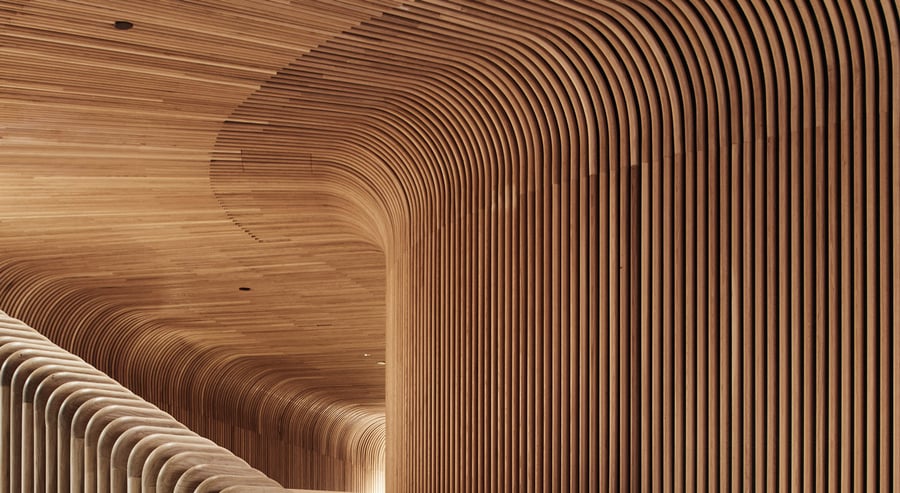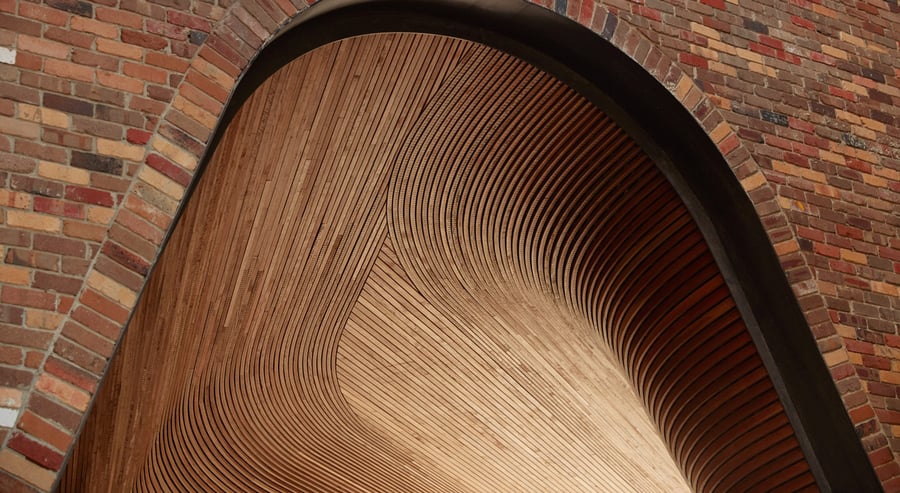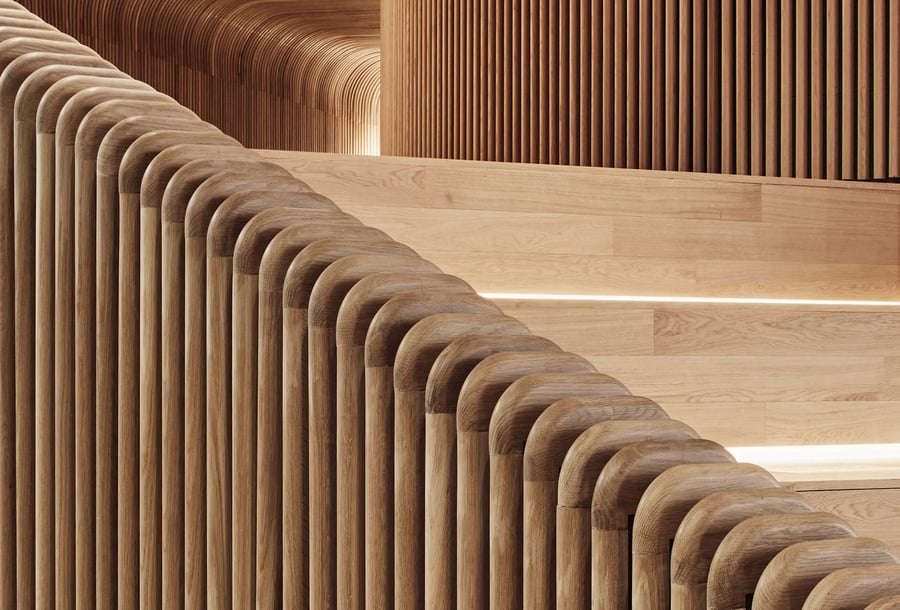5 February 2023

Curved or wave-shaped forms in architecture derive their inspiration from the beauty of nature and its natural fluidity. Integrating complex timber curvatures can be a challenge for any designer but also a brilliant way to create a spectacular sculpted surface. The properties of wood and its susceptibility to movement mean that designers need to consider the right manufacturing option to achieve their curved timber design.
This article outlines how we have commercialised curved timber and which of our two available options would be best suited to your project.
Creating curved timber forms is a complex process, and often difficult to effectively achieve on a commercial scale. Factors that need consideration, depending on the intended application are:
We offer two options for achieving curved timber – Steam bending and Kerfing that utilise our Click-on Batten System for walls and ceilings.

An extension of the traditional art of steam bending timber, our bending process takes the same principles and applies them on a much larger scale. Timber battens are heated to a high temperature under strict moisture conditions to make them malleable, then curved using a former to hold the timber in place until it cools and dries. When the wood has completely cooled, the piece will remain in the shape of the desired template and is supplied to site ready to install.
Pros
|
Cons
|
|
|
|

Kerfing is the simplest way to curve timber and involves cutting hundreds of small notches into the back of the timber batten to allow it to bend or curve. These battens are supplied to site in straight, but flexible lengths, to be formed or flexed around curves on-site.
Pros
|
Cons
|
|
|
|
There are a few key factors which must be considered when choosing the right curved timber solution for your application.
Steam Bending |
VS |
Kerfing |
|
|

Another option for achieving a curved timber feature is through CNC cutting, which cuts the curved shape out of an existing piece of timber. This process is extremely useful and cost-effective where a tight radius is required and is not achievable using other curving methods.
CNC cutting is less desirable for large scale wall and ceiling linings as both the strength and the aesthetic appeal of the timber are compromised. By using a ‘slice’ of timber rather than a traditional ‘length’, the resulting change in grain structure causes the loss in strength and visual appeal.
Our clients are at the heart of every project. It’s our job to deliver on the big picture and the smallest detail. We’re your proactive design partner – we’ll listen to what you really need and work with you to make sure the job gets done right.
We would love to hear about your next curved timber project!
